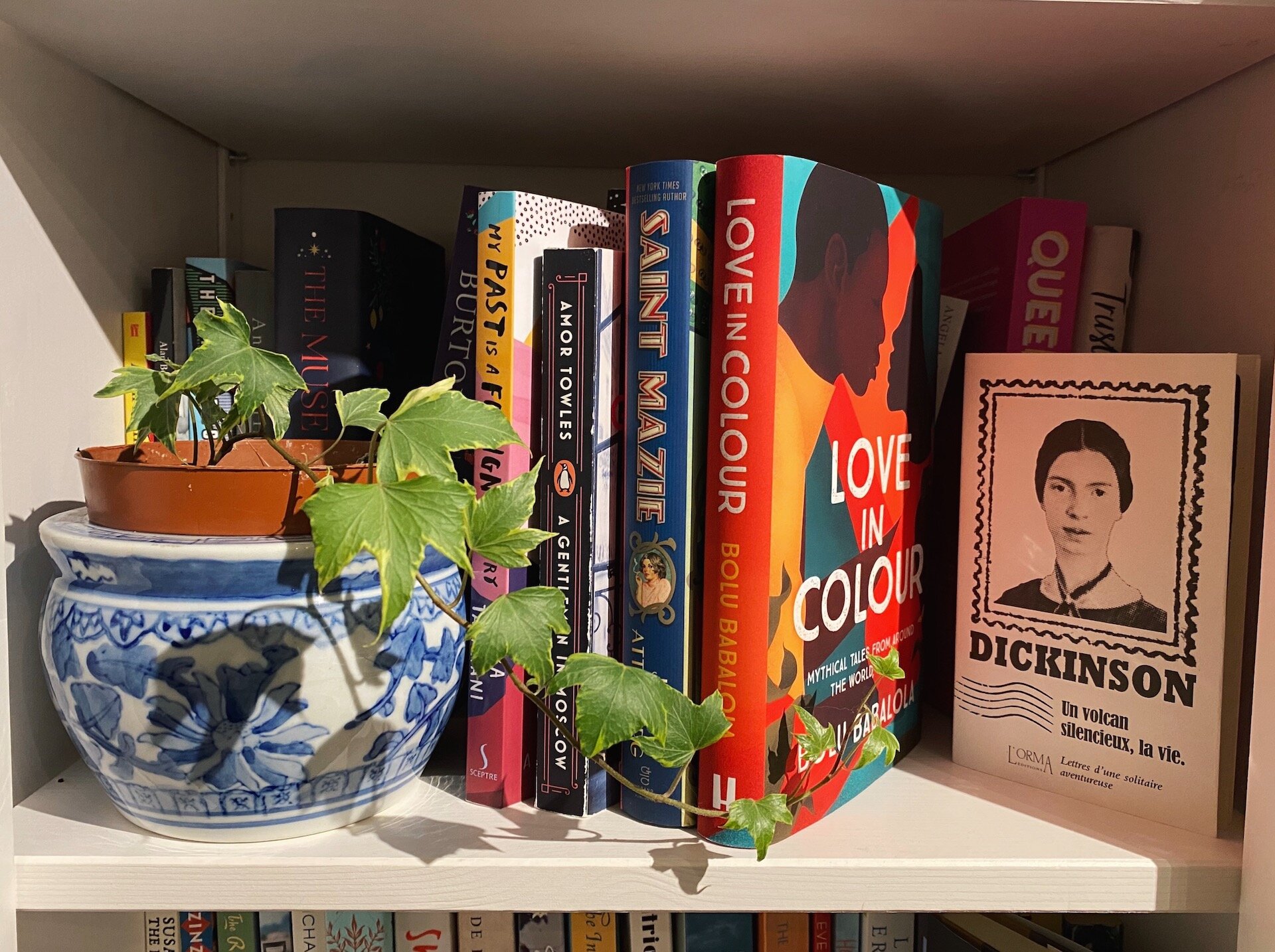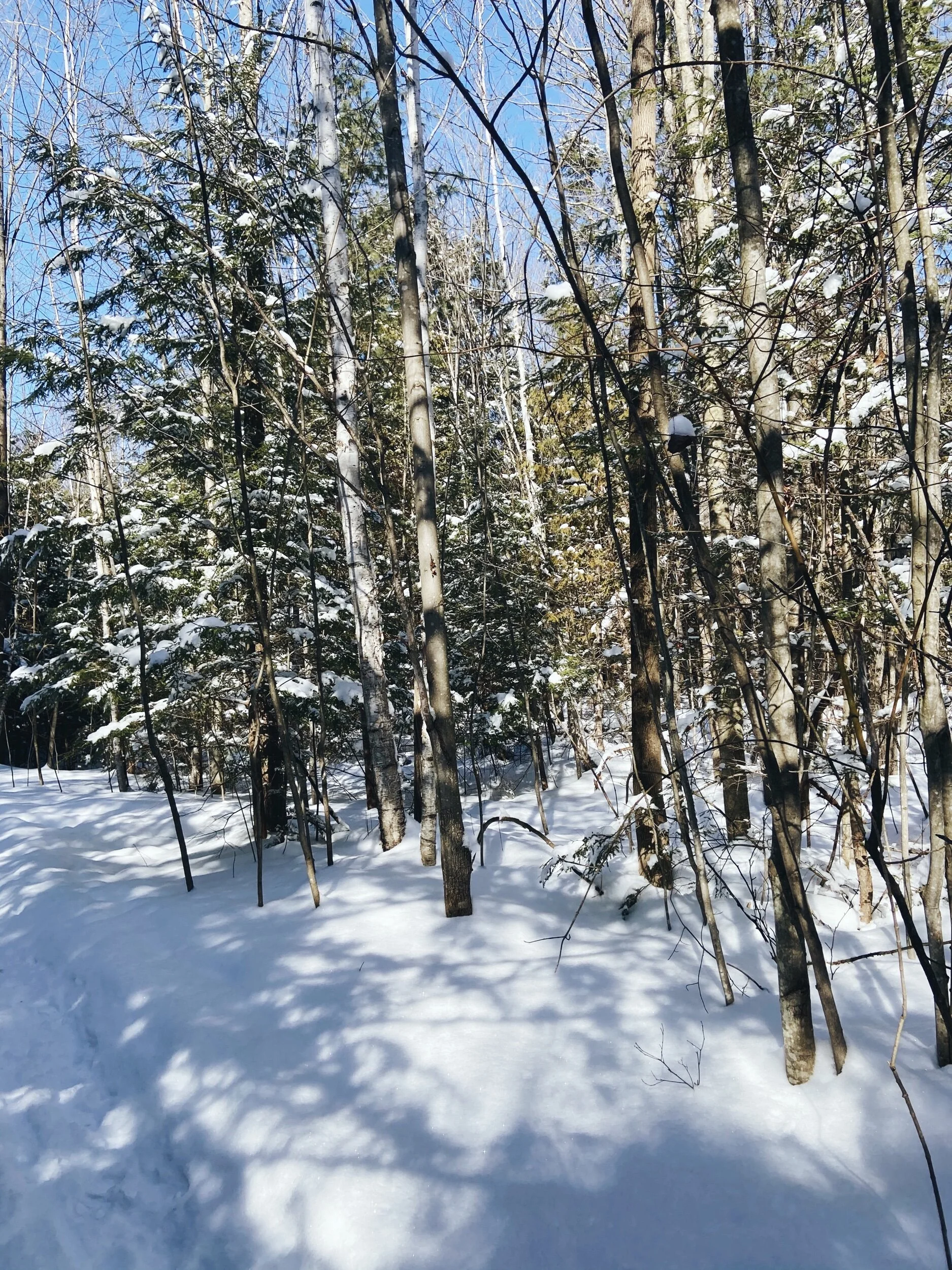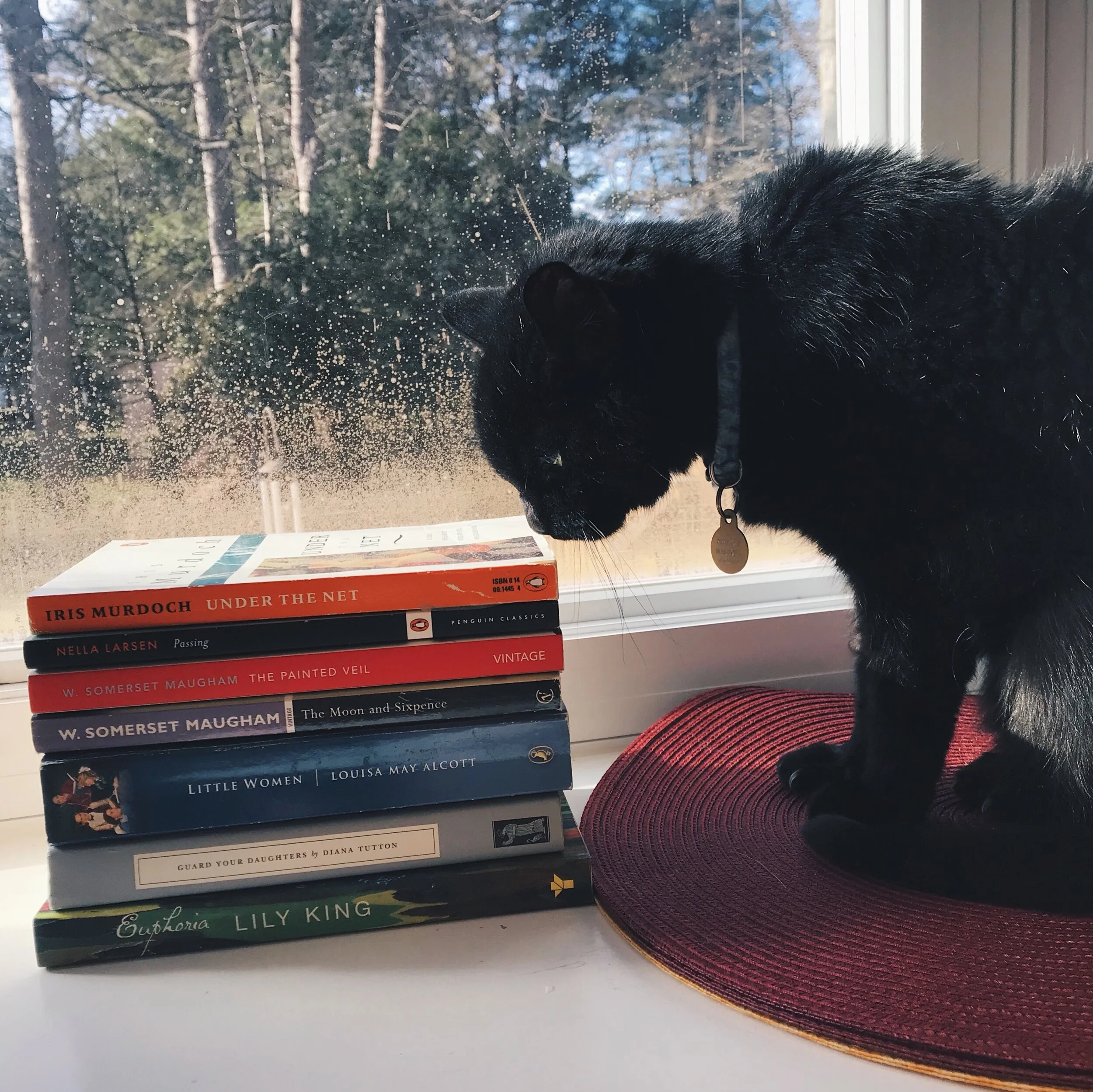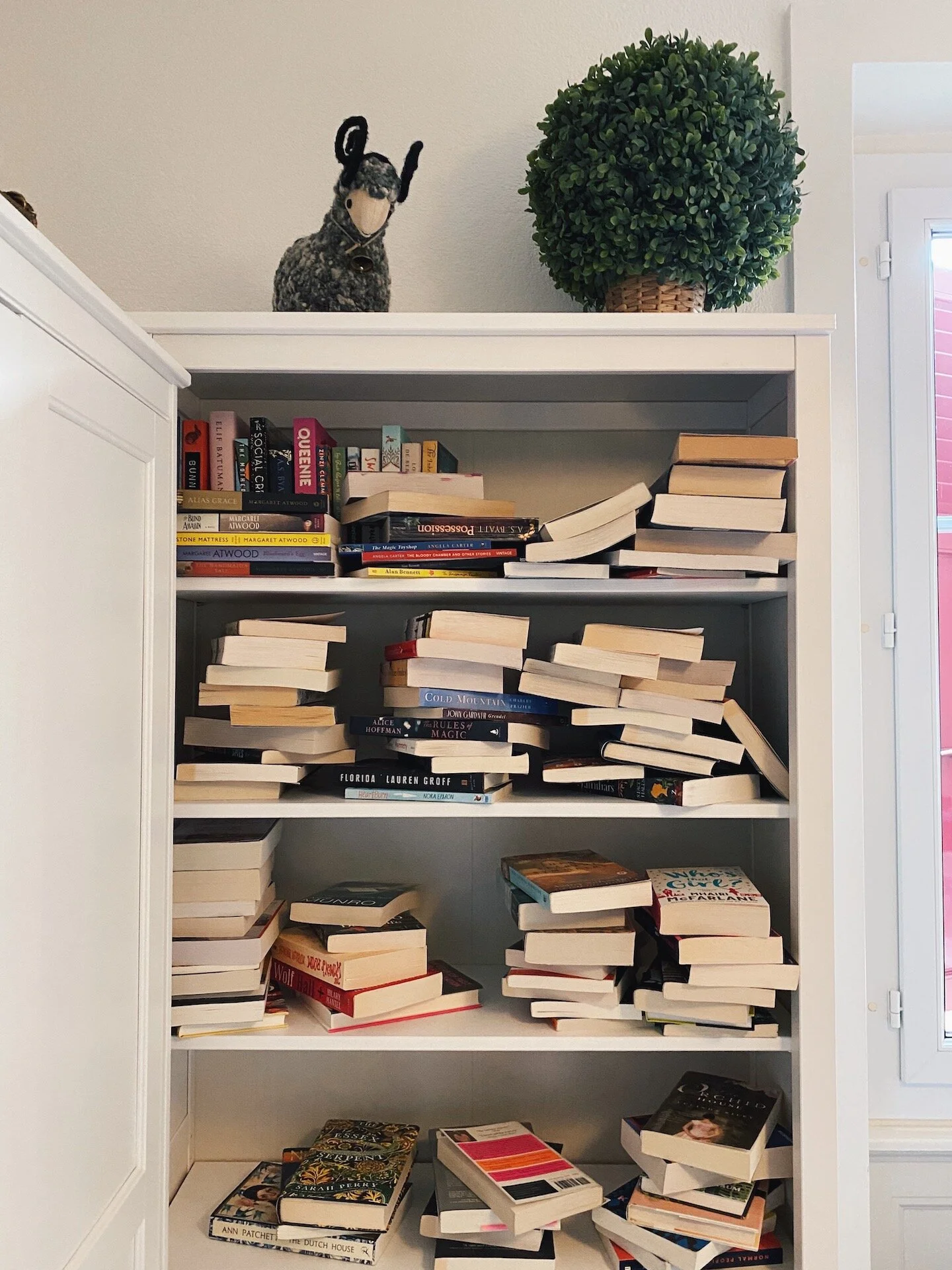What We're Reading, Vol. 30: February 2021
Every month, a group of writers and editors from The Attic on Eighth come together to share what it is that they’ve been reading lately.
Photo by Olivia Gündüz-Willemin.
From escapist novels to LGBTQA+ history to contemporary non-fiction, here’s what we’re reading this February…
Olivia Gündüz-Willemin
Blessed with beginning of the year reader’s luck, I’ve had a very happy run with the books I’ve read so far in 2021, with four titles standing out in particular: Zeba Talkhani’s My Past Is a Foreign Country, Amor Towles’s A Gentleman in Moscow, Jami Attenberg’s Saint Mazie, and now Bolu Babalola’s Love in Colour. Talkhani’s My Past Is a Foreign Country was my first read of the year… and the first book I’d read in ages that kept me reading through the middle of the night. A memoir of the author’s experience as a young, Indian girl growing up in Saudi Arabia before leaving on a journey to define her own freedom in India, Germany, and the UK, My Past Is a Foreign Country questions what it is to be a Muslim feminist in our contemporary world. Talkhani writes beautifully, drawing you into the stories she relates while making you laugh (an episode surrounding a lost backpack in Germany stands out gloriously in my memory) and delving into complicated questions of identity with incredible peacefulness.
Far from our contemporary world, both A Gentleman in Moscow and Saint Mazie are historical novels taking place in the first half of the twentieth century, and both were sitting on my shelf waiting for long winter evenings to be read. A Gentleman in Moscow is an escape into the world of a palace hotel in Moscow in the wake of the October Revolution, where a Russian count is sentenced to house arrest for the rest of his life. Whimsical and charming, the novel is somehow a very welcome read in this time when we are all more or less confined to our homes and in need of seeing an entire world come together in a single location. Saint Mazie, meanwhile, deals with the real life story of a young woman, Mazie, who takes her family-owned cinema and turns it into a haven for her Lower East Side community in New York through both the 1920s and the Great Depression. Written in epistolary form centering around the heroine’s diary, the novel is a witty and satisfying read. Completely free of moralizing in any way, it’s a wonderful profile of Mazie, who gives her all to her community while keeping up a life of partying and defying all the expectations of her time.
Currently, I’m making my way through and loving Bolu Babalola’s Love in Colour, a much-anticipated anthology of love stories from the self-styled “Romcomoisseur” who is one of my favorite presences on the Internet.
Corinne Elicona
It’s only February and yet my project list for 2021 keeps growing and growing. How exciting and yet, how overwhelming! Due to the nature of my work in the death industry, I was recently approached to help maintain and restore the grave of the “Queen of the Paris Lesbians”, Natalie Clifford Barney in Cimetière de Passy in Paris. Embarking on this quest has given me a long reading list–not only familiarizing myself with Miss Barney and her Sapphic escapades through Belle Epoch Paris, but also learning about the history and culture surrounding Parisian cemeteries. There is so much to learn about the unique relationship Parisians have with death, and how that relationship is built upon years of innovation and necessity in handling mortal remains. According to her biographer, Suzanne Rodriguez, Natalie Clifford Barney was never afraid of death. Instead, she embraced life and love in such an all-consuming manner that concerns of a life cut-short never entered her mind. As it turns out, Barney’s priorities were in order as she lived to be ninety-five years old.
Image of Barney and Vivien, via PBS.
My entrance into this project began with Rodriguez’s “Wild Heart: A Life: Natalie Clifford Barney and the Decadence of Literary Paris” — a beautifully written and all-encompassing account of Barney and her contemporaries as they shatter sexual and gender expectations of the late 1800s. Remarkably for her time, Barney was an out lesbian who had both public and private affairs with hundreds of female lovers from her youth into her old age. Most notably, names like classical Greek Scholar, Eva Palmer-Sikelianos, poet Renée Vivien, duchesse Élisabeth de Gramont, courtesan, Liane de Pougy, and painter Romaine Brooks were only a few of the many lovers Barney cherished in her lifetime.
Although her detractors sought to destroy her reputation with the knowledge of her sexuality, Barney’s unabashed and open way of living made their attempts to smear her futile. Born an American, over the course of her life she would become an honorary Parisian and highly respected French author, as well as the host of one of the most famous literary salons in the history of Paris. Many historic accounts of LGBTQ+ figures often center their tragedy instead of their triumph. It was incredibly refreshing to read “Wild Heart” and to get to know an unashamed and unpunished Natalie Barney who excelled and flourished while celebrating her sexual identity at every turn.
Sarai Seekamp
My 2021 in books, so far, has mimicked last year in my gravitation toward old favorites and the recommendation of others. I spent the first days of the new year charging through the two incredible YA books my ninth graders will be reading: Take the Mic: Fictional Stories of Everyday Resistance edited by Bethany Morrow and Aristotle and Dante Discover the Secrets of the Universe by Benjamin Alire Sáenz. Both I highly recommend, especially to anyone needing a break from some of the heaviness that can exist in fiction geared towards adults without forsaking depth and quality writing.
I also finally got around to reading Homegoing by Yaa Gyasi and it has easily found its way into my top twenty of all time. Gyasi is masterful in exploring how trauma and choices have lasting generational impacts. Her gift of storytelling is truly mesmerizing and I immediately bought multiple copies to give to friends.
During a particularly rough patch in January, I rediscovered The Night Circus by Erin Morgenstern and realized, again, how far a well-loved story can go in healing anything from work frustrations to personal heartbreaks. A truly fantastical tale of two illusionists caught up in a battle inherited by their parental figures, The Night Circus reminds me that we always have some agency in how we greet the obstacles in our lives and that true connection with other people takes so many different forms.
Finally, a fellow English teacher and friend lent me his copy of another book by Sáenz: Everything Begins and Ends at the Kentucky Club. This collection of short stories is definitely geared more for adults but the line is blurred. Similarly to Aristotle and Dante, Sáenz employs simple and precise language and structure to share stories about relationships, from romantic to familial and back again. I found parts of myself, and my own experiences, cradled in multiple stories featured in the collection and a desire to find and devour any other piece of writing Sáenz has put out into the world. I suppose it’s something to look forward to as we continue on into 2021.
M.A. McCuen
As my life becomes increasingly busy, I find myself retreating more into books as often as I can as a form of comfort and rest. One of my favorite reads this year has been Midnight Library by Matt Haig. It’s a quick and imaginative read that incorporates mental health with music, Olympic sports, and Svalbard. It transported me around the world, but also really tugged at me emotionally. Another favorite this year has been Kisses and Croissants by Anne-Sophie Jouhanneau which was an adorable ballet rom-com YA set in Paris. It was a perfect combination of all of my favorite things and truly done so well. I am currently reading One Last Stop, the newest book by Casey McQuiston. It’s a whimsical romance set between two young women who fall in love on the New York subway, with the catch being that one of the girls, Jane, has fallen out of time from the 1970’s and is trapped on the Q line. I loved McQuiston’s debut novel, Red, White, and Royal Blue, and so far I’m enjoying this follow up.
Amy Richardson
I was a bit worried that this month might be a reading slump with lockdown dragging and me being on partial furlough. But Amy, you say, surely only working two days a week means lots of time for reading? You would think! But actually, I have no idea what I spend my non-working days doing considering it’s not working through my to-read list or watching all the tv shows I’m behind on. However, February has gone fairly well so far. I started off the month by finishing one of the Morland Dynasty novels, The Black Pearl. Now, I won’t say that these are the best or most innovative books on the planet, but my grandma loved them and reading them makes me feel close to her. This series will also follow me for most of my life, considering Cynthia Harrod-Eagles has written 35 installments so far. This was followed up by Brit Bennett’s The Mothers (yes, I know, eternally late to the party etc) which I just couldn’t put down. I loved everything about it, from the use of nameless ‘Mothers’ as a sort of Greek chorus to the focus on female friendship and the power of secrets, even when no one but those involved know them. I’ve just finished An Order for Death by Susanna Gregory, another one that’s part of a reliably good series, this time following a medieval physician in Cambridge who solves murders.
My current reads are Reni Eddo-Lodge’s Why I’m No Longer Talking to White People About Race and Sepulchre by Kate Mosse. Eddo-Lodge’s book saw a surge in sales this summer in the aftermath of George Floyd’s murder and the BLM protests. I have owned my copy for a while but hadn’t got around to picking it up, mainly because I think to engage properly with material as important as this one needs to be in the right state of mind. It’s heavy and difficult and requires a lot of looking inward as a white person, being willing to live in a place of discomfort and until recently, I wasn’t in a place to do this properly. Although I am struggling with lockdown, pandemic burnout and changes at work, intellectually I was ready to do the work of unpicking my own internalised prejudices. Sepulchre is pretty much as opposite as a book can be, and although I am absolutely certain I have read it before, nothing in the first 50 pages or so has been even vaguely familiar. I guess I really have forgotten some of the things I read as a teen!














Reading Naoise Dolan’s Exciting Times and Katie Kitamura’s Intimacies, Rachel Tay explores the unease of moving away from one’s own country and language.